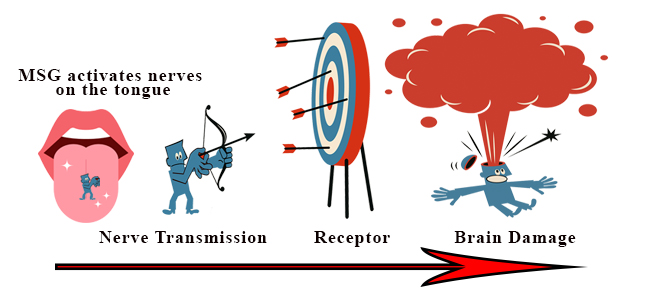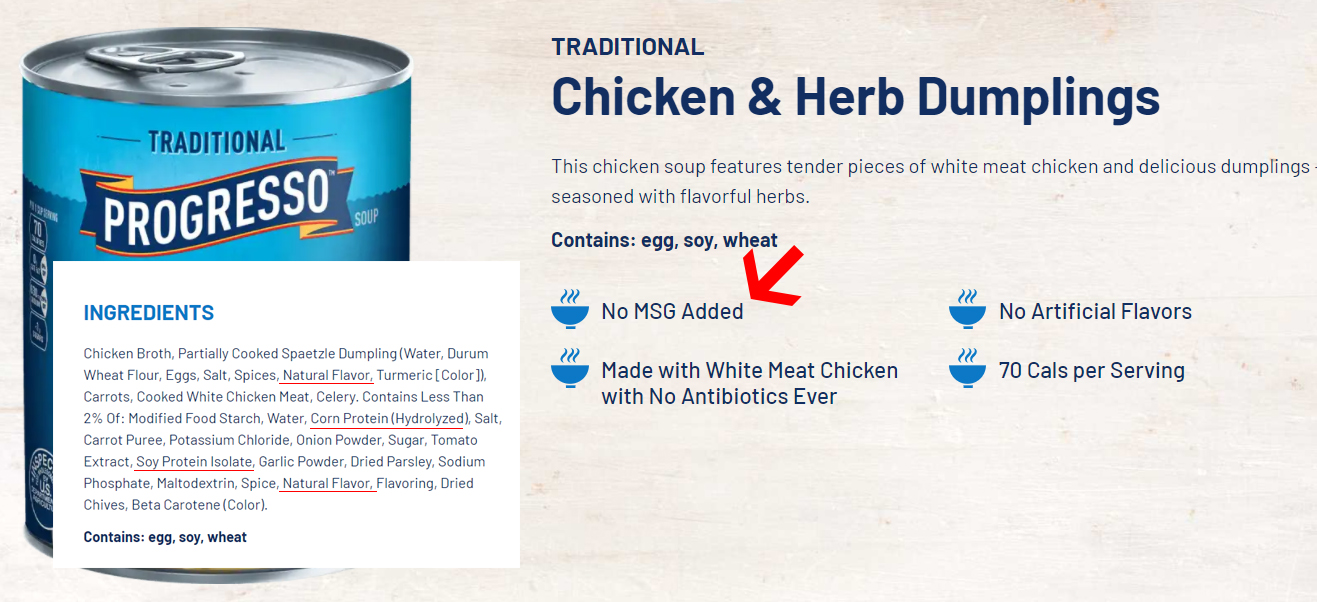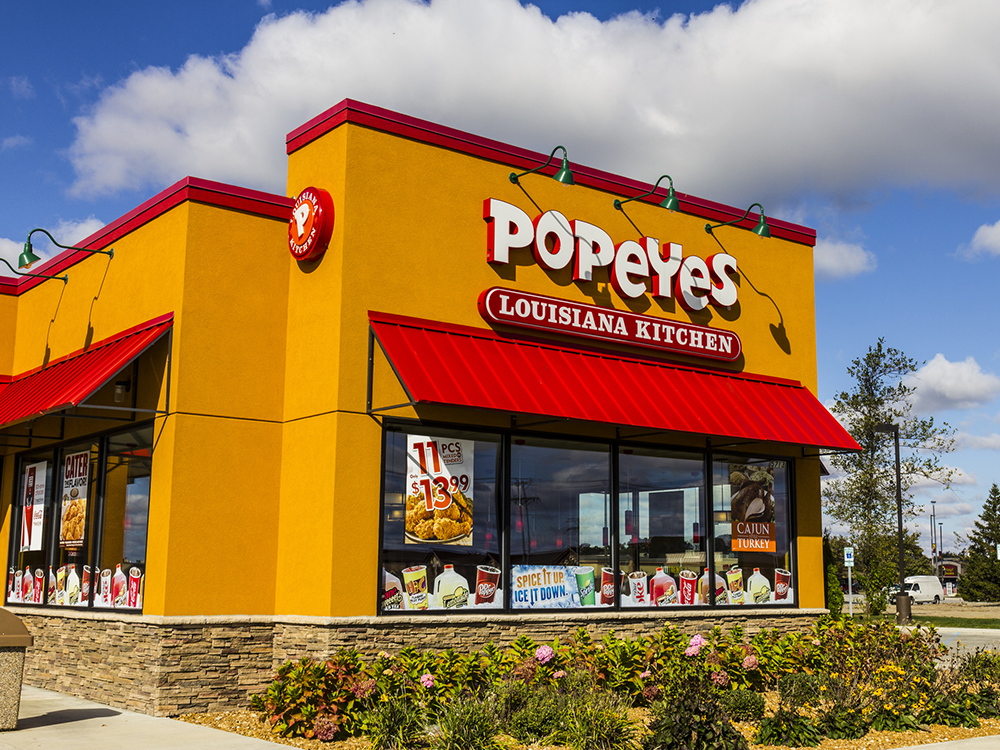This is absolutely marvelous information for all. Called “Stop MSG to End Autism,” don’t let the emphasis on MSG-induced autism fool you. Katherine Reid gives us a wonderful lesson on how to eliminate MfG, (manufactured free glutamate) from our diets. (MfG is referred to as MSG in the video).
Coming soon
The “tell-all” about the toxic effects of monosodium glutamate and the U.S. regulatory agency that has been successfully suppressing that information for over 50 years.
The ‘soup wars’ are over, but the ‘clean label’ fraud lives on
Over a decade ago Progresso and Campbell’s duked it out over whose soup contained less MSG. Called the “soup wars,” the first shot was fired by Campbell’s in a 2008 ad that said more Progresso soups contained monosodium glutamate than Campbell’s. Soon after, Progresso took out a full-page ad in the New York Times stating that “Campbell’s has 95 soups made with MSG.”
Now, those big brands tell different stories about the MSG in their products.
Campbell’s has decided to focus on how safe MSG is. They tell us that “MSG occurs naturally in many foods, such as tomatoes and cheeses,” while in fact MSG is manufactured. It does not appear “naturally” anywhere.
Along with that, “for those looking to avoid MSG,” Campbell’s has “clean label” soups. Those are soups that contain the same toxic manufactured free glutamate (MfG) that’s in MSG, which will be found in ingredients such as yeast extract, whey protein concentrate and natural flavoring, without any mention of the toxic glutamate in them.
Progresso has taken it a step further, claiming that its “focus on quality ingredients” means they’ve ditched using this excitotoxic additive all together.
Not exactly.
Progresso New England clam chowder is advertised as “no MSG added,” yet it contains natural flavor, yeast extract and whey protein concentrate. The brand’s Chicken & herb dumpling soup also states “No MSG added,” but contains natural flavor, corn protein (hydrolyzed), soy protein isolate and a second listing of natural flavor. Those are just two examples, we could go on and on, but you get the idea. All of those ingredients contain MfG.
Considering what’s contained in those soups, and how big and bold Progresso makes the claim of “No MSG added” one might think there’s no FDA regulation against such fraud. But there is.
Over 25 years ago the FDA issued this statement:
“While technically MSG is only one of several forms of free glutamate used in foods, consumers frequently use the term MSG to mean all free glutamate. For this reason, FDA considers foods whose labels say “No MSG” or “No added MSG” to be misleading if the food contains ingredients that are sources of free glutamates, such as hydrolyzed protein.”
Unfortunately, long ago the FDA stopped punishing or even scolding those who violate the Federal Food, Drug and Cosmetic Act – but that doesn’t make this any less a violation of FDA rules.
Campbell’s and Progresso are far from the only food manufacturers who engage in this “clean label,” “No MSG added” trickery. And soups are not the only products promoted this way.
So, when you pick up a product that states “No MSG” or “No added MSG,” you’ll know that you don’t even need to read the ingredient label.
Just put it back on the shelf.
Beware of ‘clean labels’
Restaurant Brands International, apparently happy with the reaction to its Burger King “banned ingredient” list of 2021, is now tapping another one of its brands, Popeyes Louisiana Kitchen, in promising “all-clean ingredients.”
While Burger King announced it was planning to ban 120 “non-essential artificial ingredients” from its food, Popeye’s seems to be focused on one in particular: monosodium glutamate (MSG).
“We are currently testing all-clean ingredients in our batter, breading and sandwiches in a few U.S. markets and we expect to be on track to an all-clean menu nationwide by 2025,” the company told Bloomberg.
Sounds healthy, doesn’t it? But will they actually get rid of the ingredients that contain the component in MSG that causes brain damage and adverse reactions, such as asthma and migraine headache? It’s deceptive and misleading to replace MSG with other toxic ingredients. But worse yet to refer to excitotoxic amino acids as “clean” ingredients. Today, there is a whole clean-label industry centered around toxic manufactured free glutamate (MfG). An industry that promotes the use of ingredients that contain the same toxin that MSG contains, but will give no clue to its presence.
A picture is worth a thousand words, especially when the words you are hearing are lies
The Glutes talk a lot about how glutamate is eaten, digested, moved into the blood stream, and from there moved into the brain. That’s interesting, and it’s kind of impressive sounding, but it isn’t how the brain damage triggered by manufactured free glutamate (MfG) actually works. The brain damage initiated by glutamate ingestion is executed in the nervous system. It has little or nothing to do with digestion.
The glutamate that causes brain damage is always free. The glutamate in MSG is always free. When free glutamate is taken into the mouth, it triggers glutamate receptors in the mouth and on the tongue, causing them to fire.
If there’s a moderate amount of free glutamate involved, a glutamate receptor will be activated once and will transmit its chemical message to the next glutamate receptor in line until the goal receptor has been reached. Some of this free glutamate will very likely activate neurons (nerve cells) that facilitate the sensations of sweet, sour, salty, or bitter in the food consumed with it. These neurons are responsible for communicating the sense of taste to the brain.
When excessive amounts of free glutamate are taken into the mouth, the nerves that are triggered fire repeatedly until the glutamate receptors at which the firing glutamate neurotransmitters are aimed, become overstimulated and die. And the nerve cells that are obliterated in this way, are not replaced with neurons (nerve cells). And the functions those obliterated cells would have regulated had they not been destroyed — like controlling appetite and satiety involved in obesity and controlling reproductive function for example — will never be replaced.
Basic to understanding how this works, is the fact that only free glutamate, meaning glutamate outside of protein when it is ingested, is potentially harmful. Glutamate must be free in order to take up its role as a neurotransmitter, triggering the nerves that will start the neurotransmission of glutamate stimuli to glutamate receptors. That explains why a tomato, which has lots of glutamate in it (glutamate that is bound to other amino acids), does not cause brain damage or adverse reactions when ingested as an unprocessed tomato.
Reaction to an “excessive” amount of MSG/MfG is a reaction caused by an excitotoxic neurotransmitter in the central, or possibly the peripheral, nervous system, not by anything related to blood circulation or digestion.
What transpires when free glutamate enters the mouth can be visualized as follows:

Failure to tell the entire story of what happens when MSG/MfG is ingested, lies at the root of the web of distraction the Glutes spin about the alleged safety of MSG/MfG. Not a lie in one sense of the word, but omission of a material fact seemingly designed to draw attention away from the truth — a strategy that delivers greater impact than any simple lie.
Released documents expose that Ajinomoto paid the U.S. Dept. of Agriculture over half a million dollars to do a study designed to prove that consuming MSG is good for you
Last December we revealed a remarkable finding, a 2010 press release issued by Ajinomoto telling about the company’s cozy partnership with the U.S. Department of Agriculture to study MSG.
At that time, we tracked down and sent some questions to the scientist named in the release, Dr. Kevin Laugero, who is still affiliated with the USDA/ARS (Agricultural Research Service). When we didn’t hear back from him, we took the next step, a Freedom of Information Act request with the USDA.
We recently received a response from the USDA. Here’s what we learned in a 53-page release of documents, many of them invoices from the USDA to Ajinomoto.
- Ajinomoto, possibly the world’s largest manufacturer of MSG, paid the USDA a total of $674,000 to conduct a three-year “study” on the “effects of ingesting MSG on energy balance and eating behavior.” The hypothesis proposed was that daily consumption of MSG will “reduce body weight rebound.”
- Ajinomoto, known as “the cooperator” in the official “statement of work” filled out by the USDA, was given a wire routing number to zip those funds into an account at Citibank.
- The original budget of $598,653 was increased twice to “expand subject recruitment efforts,” hire a staff recruiter, project manager and up the stipend paid to volunteers, which was originally $580 per person for a 25-week commitment.
Although Dr. Laugero finally did reply, he would only say that the Ajinomoto glutamate research project was completed and that scientists have analyzed the data, which have not been published. “I can’t really comment on the results.” he said.
But by far the most interesting part of the documents we received has to do with the “research plan,” a study to be produced by three USDA researchers – including Dr. Laugero. The outline describes a six-month scheme for psychological and metabolic evaluations, cognitive testing, multiple blood draws, saliva samples, “snack food buffets,” mental stress tests, and MRI brain scans that collected data on the subject’s “neural responses to food cues,” none of which appear to be relevant to energy balance and eating behavior. Volunteers were sent questionnaires, and for the MSG test group there would be consumption of MSG (supplied as a broth powder) prior to their breakfast, lunch and dinner – called the “intervention phase.”
But evidently something went wrong, as the study was never published. Since we know the Glutes never publish anything that might suggest that MSG is toxic, and since the USDA was not even pretending to do an independent study, apparently when the results didn’t come out as desired the report of the study vanished. If not for the twelve-year-old press release we found online that tipped us off, no one outside of the USDA would know about this “partnership” payout.
One might ask why this study was done in the first place? And why done by the USDA?
We think we may know at least part of the answer.
Two years before the USDA/Ajinomoto joint venture, a study from the University of North Carolina clearly linked MSG consumption in people to weight gain. According to epidemiologist Dr. Ka He, those who consume large amounts of MSG increase their risk of being overweight by a whopping 175 percent.
To counter that, Ajinomoto jumped in with a rodent study that was published in the journal Physiology & Behavior, concluding that rats who drank MSG spiked water were lean and healthy. But perhaps comparing their lab rats to humans didn’t seem as effective – at least publicity wise.
So, why not collect a group of human lab animals to study, and have the good name of the USDA associated with Ajinomoto and the safety of MSG? Ajinomoto found the USDA more than willing to play along.
As we said last year, this is a stunning example of how closely connected industry is with our so-called watchdog federal agencies.
Those interested in learning more about agency/industry cooperation will find interesting material at Industry’s FDA: https://www.truthinlabeling.org/assets/industrys_fda_final.pdf. Those with interest in methods used by the Glutes to come to the foregone conclusion that MSG is a harmless food additive can access How the “MSG is safe” game is played: https://www.truthinlabeling.org/safe.html
Something to think about
If MSG and MfG* weren’t harmful, why would they be hidden?
*MfG — manufactured free glutamate
MSG goes viral!
Last week my Google MSG alert went wild. Could it be that news sites are finally covering the story that monosodium glutamate causes brain damage leading to obesity and infertility?
Turns out the MSG frenzy was about a NY Rangers fan who sucker punched a Tampa Bay Lightning fan at the Madison Square Garden – MSG.
I’d like to see the day that our MSG story goes viral — the one that exposes the FDA/industry lies alleging that MSG and MfG are harmless. Until that time comes, you can count on the Truth in Labeling Campaign to give you all the facts.
Truth in Labeling Campaign website
Saturday’s Secret: Things the “Glutes” don’t want you to know
Who is up to the challenge?
Wanted. One savvy person to orchestrate the removal of monosodium glutamate from the FDA’s GRAS (generally recognized as safe) list.
Article Nine of the Bill of Rights refers to the rights retained by the people — and that it is the right of the people to know everything going on in the government. It is therefore unlawful for the FDA to fail to respond to a Freedom of Information request for copies of data used in granting GRAS status to free glutamic acid used in food.
It seems reasonable to conclude that in order to fill that request, the FDA would have to admit that 1) there are no data that demonstrate that free glutamate can be safely used in food, and 2) the only studies that claim to have demonstrated the safety of free glutamate have been double-blind studies that used excitotoxic aspartic acid (in aspartame) in placebos.
Both aspartic acid (found in aspartame) and glutamic acid (found in MSG) cause brain damage and identical adverse reactions.
Big Food and its own form of genocide
Someone sent me an article titled “Genocide and Crimes Against Humanity,” with a note that the recent Russian invasion of Ukraine had placed genocide and related concepts at the center of public discourse.
It made me wonder if and when Big Food, which pours neurotoxic chemicals into products consumed by infants, children, pregnant women, the elderly and minorities (many who live in food deserts in the United States) will take its rightful place among those acknowledged as participating in genocide?










